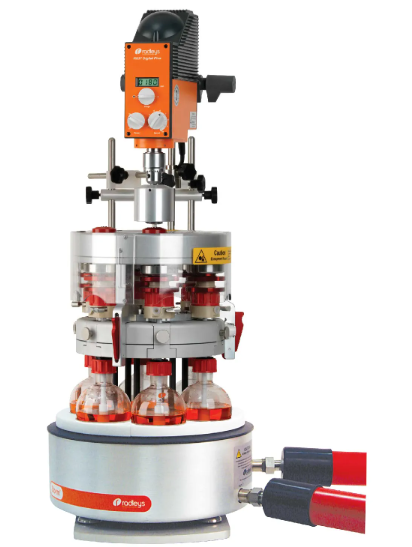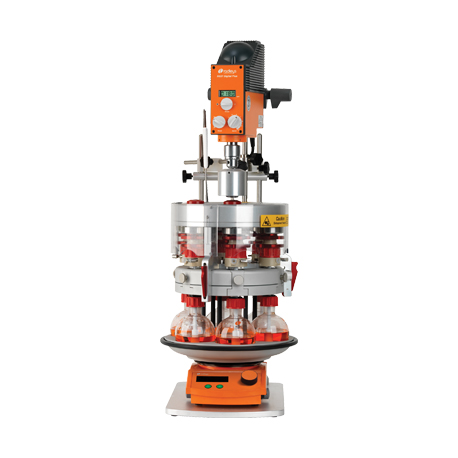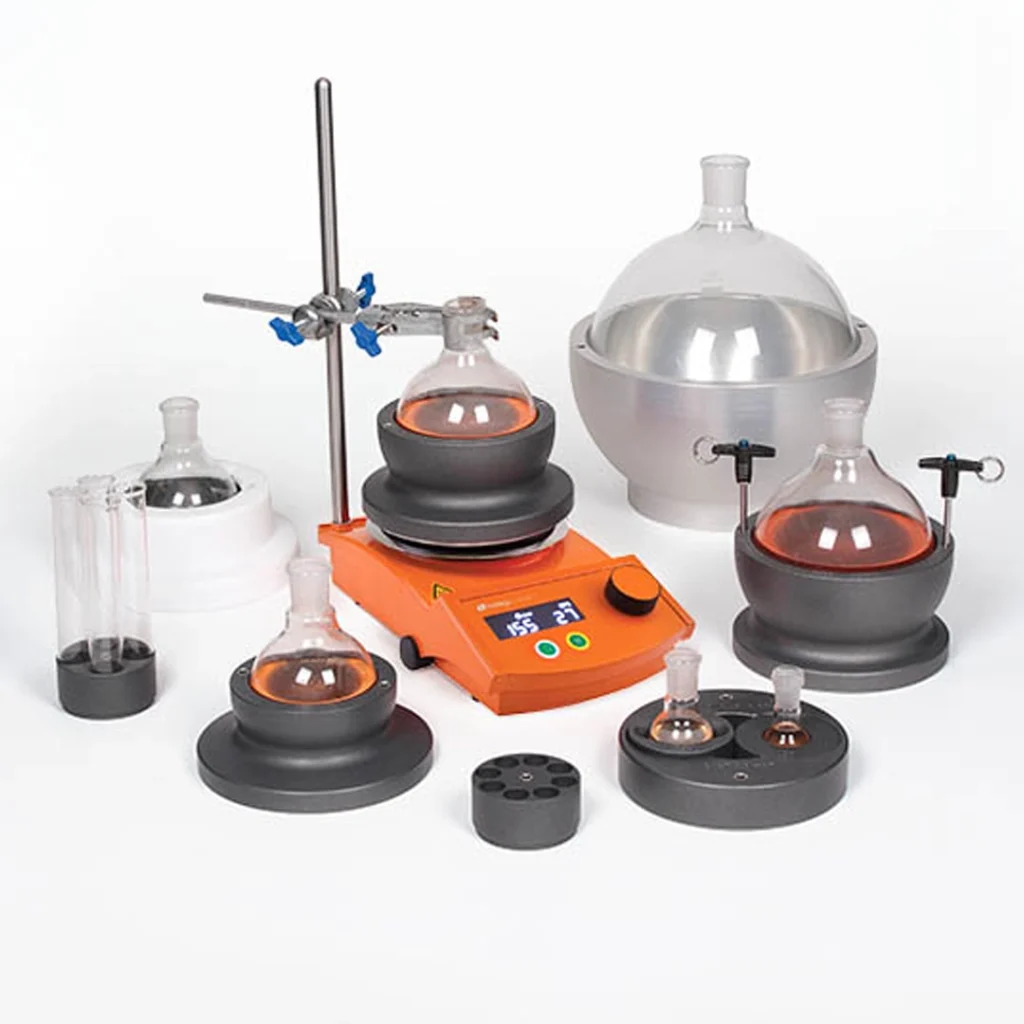Heating/cooling work station
Breeze is a heating/cooling work station with an operating range of -30 °C to + 165 °C, and Storm has an operating range of -65 °C to + 200 °C.
Breeze
With its small benchtop footprint and no insulation, Breeze offers a narrower operating range of -30 °C to +165 °C. However, its compact design delivers a much faster response to temperature changes, making it particularly well-suited for applications requiring precise solution control, such as crystallization studies.
Features:
- Rapidly heat/cool, multiple or individual flasks up to 5 liters
- Thermofluid range of -85 °C to +235 °C; providing a solution temperature of -30 °C to +165 °C.
- Internal design maximizes heat transfer from the thermofluid to the top plate and minimizes temperature variation across the surface
- Breeze’s small internal volume ensures a quick response to changes in thermofluid temperature
Storm
Storm features a sophisticated internal fluid path and a high-performance insulated case that together maximize thermal transfer. With its wide operating range of -65 ˚C to +200 ˚C and excellent heat stability, Storm is ideal for steady-state reactions that require stable temperatures over extended periods with minimal variation across the heated surface.
Features:
- When combined with a suitable circulator Storm is a powerful heating (+200 °C) and cooling (-65 °C) work station
- Storm does not contain integral stirring (therefore stirring must be provided by a suitable overhead stirrer)
- Storm’s unique internal design maximizes heat transfer from the circulator thermofluid, focusing the energy towards the top plate surface
- Storm’s contoured top plate was design to specifically accept the Carousel 6 Plus and Tornado combination
- The design minimizes temperature variation across the contoured top plate
- Storm will accept thermofluid from -85 °C to +235 °C: providing a typical solution temperature within your reaction flask of -65 °C to +200 °C




